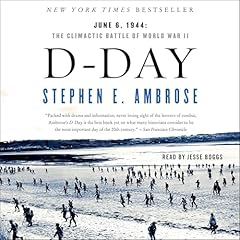
The Bataan Death March
Life and Death in the Philippines During World War II
No se pudo agregar al carrito
Add to Cart failed.
Error al Agregar a Lista de Deseos.
Error al eliminar de la lista de deseos.
Error al añadir a tu biblioteca
Error al seguir el podcast
Error al dejar de seguir el podcast
Obtén 3 meses por $0.99 al mes + $20 de crédito Audible
 Exclusivo para miembros Prime: ¿Nuevo en Audible? Obtén 2 audiolibros gratis con tu prueba.
Exclusivo para miembros Prime: ¿Nuevo en Audible? Obtén 2 audiolibros gratis con tu prueba.
Compra ahora por $6.95
-
Narrado por:
-
Colin Fluxman
"They went down by twos and threes. Usually, they made an effort to rise. I never can forget their groans and strangled breathing as they tried to get up. Some succeeded. Others lay lifelessly where they had fallen...I observed that the Jap guards paid no attention to these. I wondered why. The explanation wasn't long in coming. There was a sharp crackle of pistol and rifle fire behind us." (Captain William Dyess)
On December 7, 1941, the Japanese military engaged in a preemptive strike against the American Pacific fleet stationed at Pearl Harbor, but they also began maneuvers to attack the American controlled Philippines. Although General Douglas A. MacArthur and Allied forces tried to hold out, they could only fight a delaying action, and the Japanese managed to subdue all resistance by the spring of 1942. However, in the aftermath of Japan's successful invasion, as the nation's military strategists began preparations for the next phase of military actions in the theater, their forces had to deal with a critical logistical problem they had not foreseen. The Japanese had to deal with large numbers of Filipino and American soldiers who had surrendered after a lengthy defense in the Bataan peninsula, but they were not prepared for so many prisoners of war because their own military philosophy emphasized rigid discipline and fighting until the end. They could not imagine a situation in which Japanese soldiers would willingly surrender, so they assumed that no other combatants would do so either.
©2012 Charles River Editors (P)2016 Charles River EditorsLos oyentes también disfrutaron:




















Only the Rape of the city of Nanking, could rival the magnitude of human atrocities and inhumanity that the Japanese Imperial Army committed on a group of people.
It galvanized resistance against the Japanese invasion and was a very convincing proof that the Japanese Coprosperity Sphere, was a farce and a lie.
The Japanese were not saviors and liberators, they were monsters and worse than the plague itself.
The Bataan Death March showed the world, the barbarity, cruelty and inhumanity of the Japanese Imperial overlords.
This tragic event became one of the most effective recruiting posters to motivate resistance against Japanese Imperial rule.
It clearly showed who were the GOOD guys and the BAD guys.
This short, almost pamphlet like explanation of the event hits the mark in explaining how the event unfolded.
Excellent narration.
Highly Recommended.
Short, but excellent!!
Se ha producido un error. Vuelve a intentarlo dentro de unos minutos.
cliff notes for Ghost Soldiers by Hampton Sides
Se ha producido un error. Vuelve a intentarlo dentro de unos minutos.
Very brief review of Japanese inhumanity
Se ha producido un error. Vuelve a intentarlo dentro de unos minutos.
No good
Se ha producido un error. Vuelve a intentarlo dentro de unos minutos.


